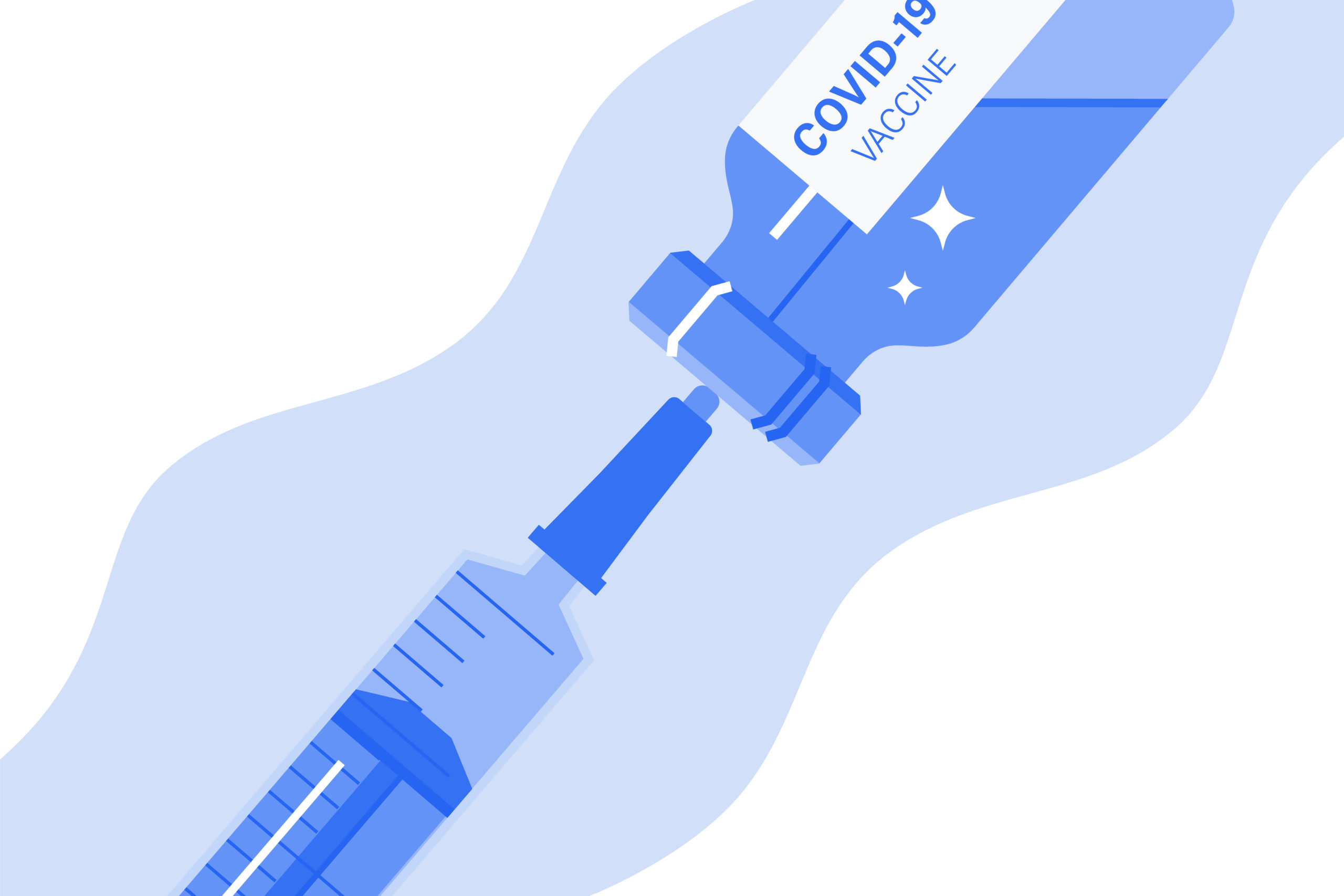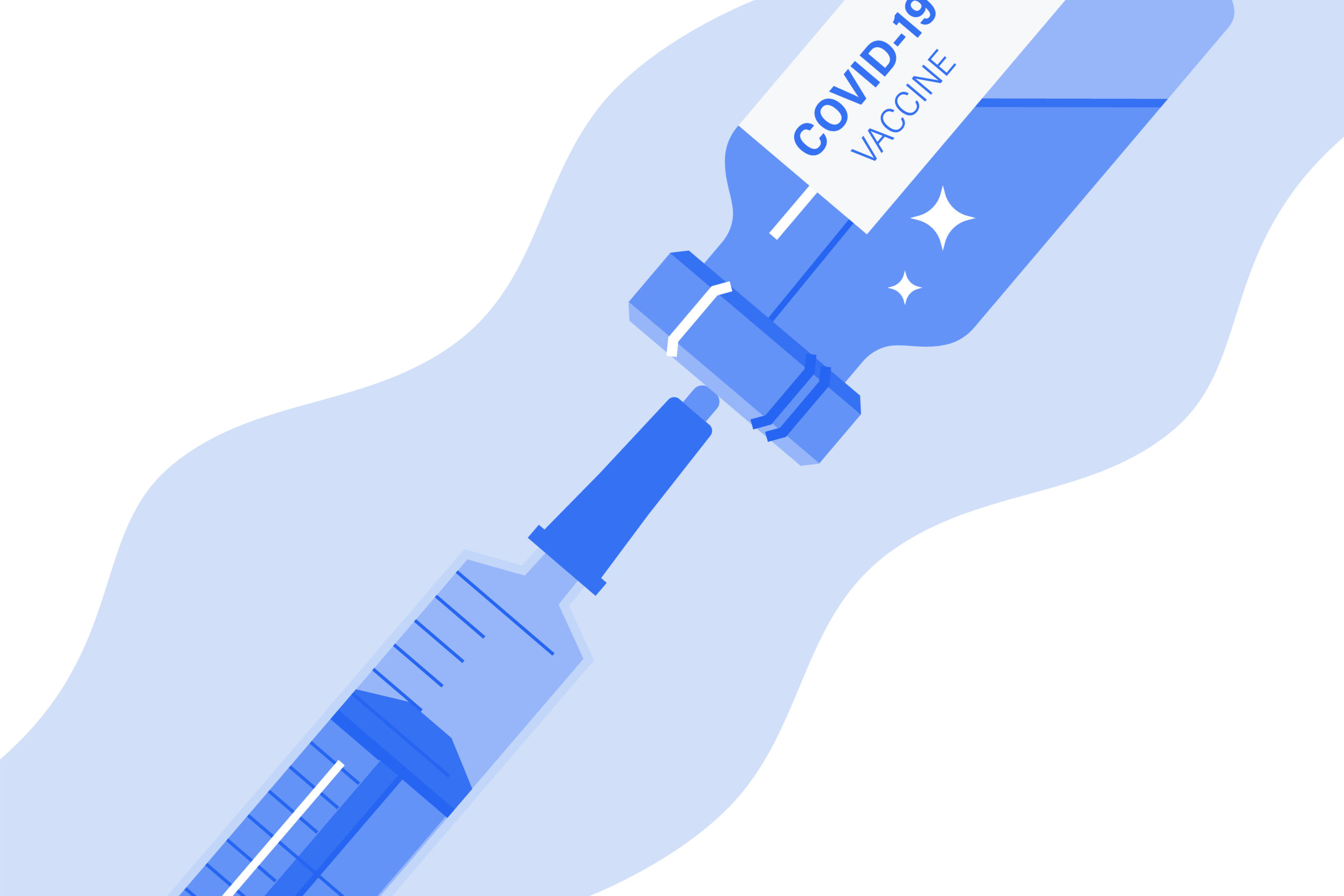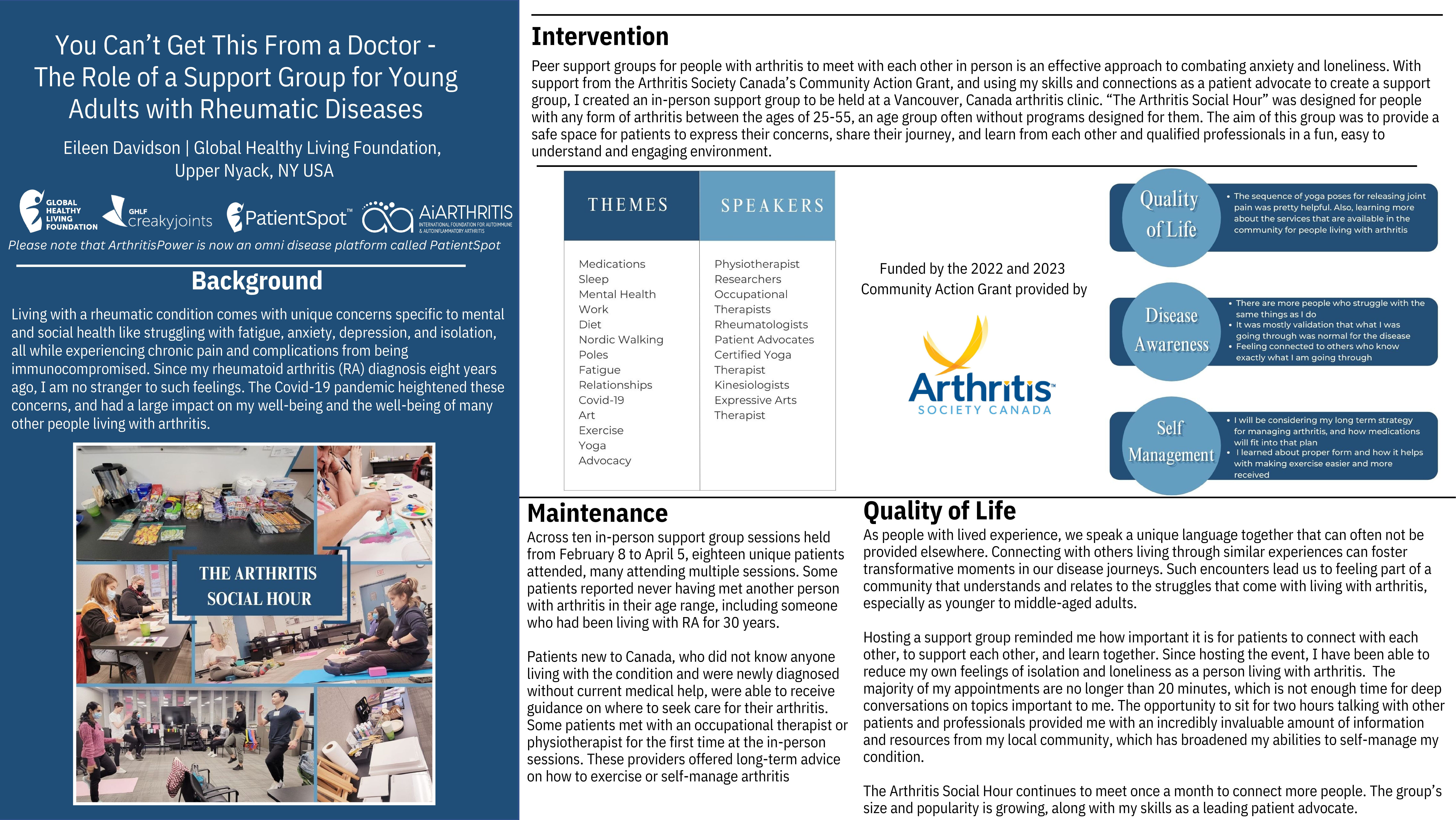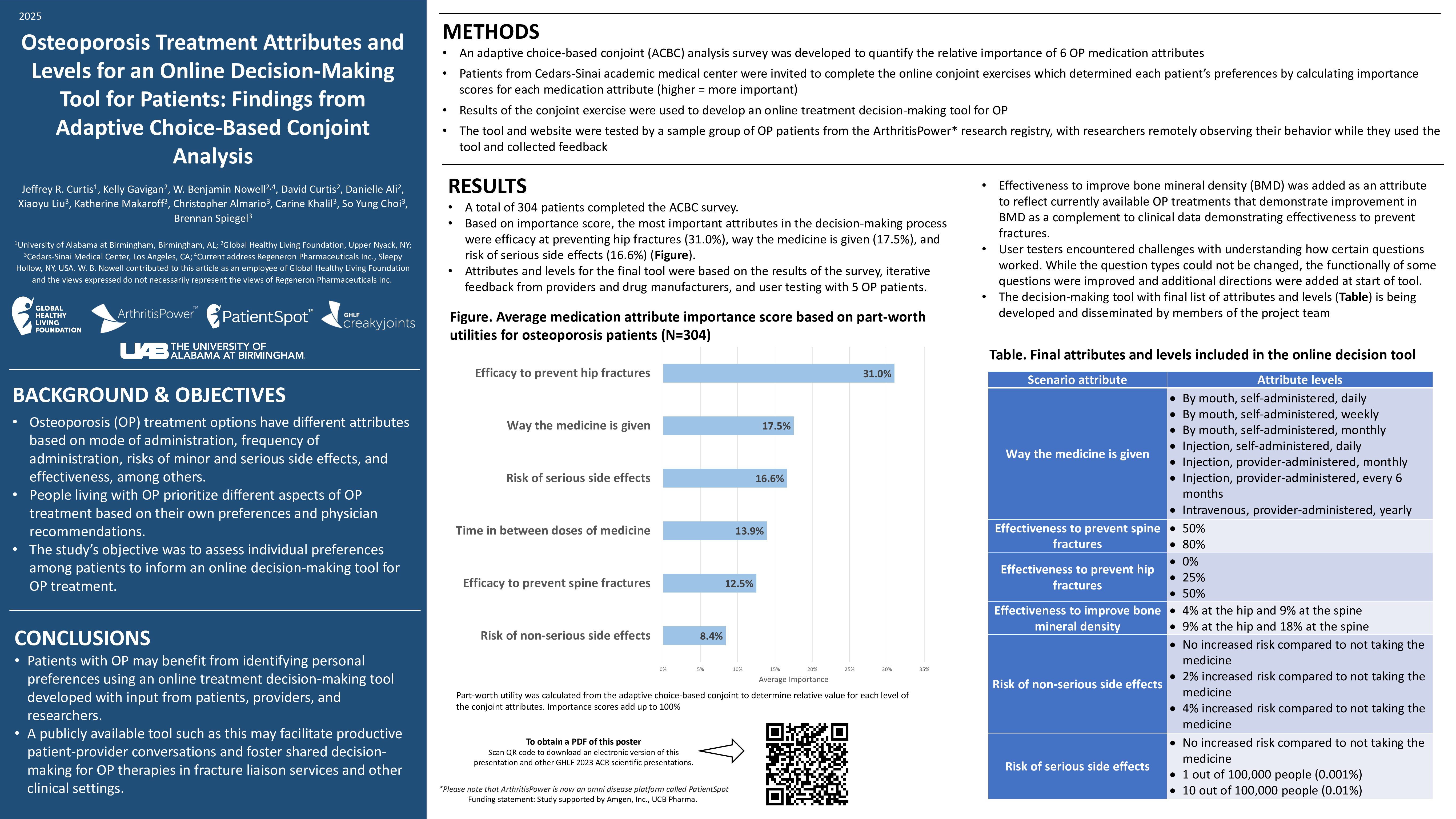After two years of symptoms, I was diagnosed with rheumatoid arthritis in 2012. I started my first biologic in late 2012 and my first infusion in 2013. I’ve learned a lot since then about what to expect and how to best advocate for myself. I’ve received treatment with five biologics, a JAK-inhibitor, and now I’m taking the biosimilar Infliximab-dyyb (Inflectra). This biosimilar is used in conjunction with methotrexate. It is designed to reduce the signs and symptoms of rheumatoid arthritis, slow the progression of joint damage, and help improve physical function.
Preparation for “Infusion Day” begins weeks before the actual infusion.
2-4 Weeks Before My Infusion
At my last appointment with my rheumatologist, we agreed to decrease the time between my infusions from seven weeks to six weeks. I haven’t yet received the authorization to change the time between my infusions, so I requested it a second time. It turns out my doctor hadn’t requested the change in enough time to get authorization before this next infusion.
I block out infusion day and the following day from any meetings or social activities. History has proven that I may have side effects the following day that can interfere with activities I planned to do. I avoid going to crowded places in general, but I’m especially intentional in staying away from crowds during the week before an infusion. I can’t risk getting a virus that will delay my infusion.
The Day Before My Infusion
Tomorrow will be a long day of sitting for the infusion, so today I stay active by going on a walk and swimming. I feel incredible swimming; I’m so flexible in the water. It’s important to stay very hydrated in the days leading up to the infusion, so I drink even more water than usual in the 24 hours before my infusion.
The Morning of the Infusion
6:35 am: Waking up to whining dogs is not ideal, but I had a nice sleep. Maybe it was all that swimming yesterday that let my body relax. I do my morning hygiene routine. Today will be my seventeenth infusion with a biosimilar — and close to my hundredth infusion overall. I’ve lost track over the years.
6:45 am: I take my dogs outside and water plants while the dogs play in the yard. My body hurts more than it did a week ago, clearly communicating I’m ready for this infusion. I have this feeling of excitement like Christmas morning jitters.
7:00 am: I make coffee and plan to do some work on my laptop, so I place my coffee mug and water on my desk. Suddenly I find myself cleaning the kitchen countertops and stove. Now I’m doing the dishes. I remember I need to wrap my son’s birthday gift to mail to him, so I begin gathering wrapping materials. I wrap his gift and feel productive. Didn’t I make coffee? What is happening?
8:00 am: After cleaning randomly for almost an hour, I grab the vacuum. It’s happening again — my nesting instincts have kicked in. I get this urgency to clean frantically on infusion day or sometimes on infusion eve. There’s something about going to the hospital that puts me in survival mode. I feel the need to get things in order and to complete tasks I’ve been putting off.
Up until about three years ago I was teaching and coaching teachers full-time. My infusions were roughly five hours long, so I had to take the whole day off from work. The day before an infusion was full of tying up loose ends, making sure teachers had what they needed, and prepping for the possibility that I would not be able to come to work the following day due to side effects from the infusion. Missing work impacted lots of teachers and students. Now that I am partially retired and working from home, extra prep before an infusion isn’t necessary but it has become a habit.
9:00 am: Time to reheat that coffee and take a sip. I spend the next few hours doing a mixture of working on the computer, exercising and stretching, and cleaning.
Packing the Infusion Bag
11:40 am: I need to leave the house in a little over an hour so I get dressed and prepare for my infusion. I stuff my tote bag with a notebook that contains questions for my nurse, my laptop, phone charger, earphones, a gluten-free fig bar for the car ride home later, water, and medications I need to take prior to the infusion: Tylenol and Benadryl.
12:10 pm: I eat a bowl of cashew-based yogurt with fresh blueberries and bananas. Eating a light lunch will prevent me from being uncomfortable sitting in the infusion chair for three hours this afternoon.
12:50 pm: It’s time to leave for my 30-minute drive to the hospital where the infusion center is located.
Arriving at the Infusion Center
1:30 pm: The room is full today. The infusion center at the hospital has 10 chairs separated by a small table and partition. I take one of the two empty chairs. Most chairs are occupied by individuals receiving treatment for cancer.
Immediately I spy a cute pink beanie on the head of a woman across from me. A stack of magazines sits beside her. She reminds me of my mom who had many rounds of chemo at an infusion center dedicated to cancer patients. Back before the pandemic, when my mom was still with us, I sat with her while we both read and passed the time together. This infusion center is smaller and is used for IV treatment for various conditions. There isn’t much room for people to visit, and with COVID-19 procedures in place, visitors are not allowed at all.
Before Starting the IV (Pre-treatment Procedures)
1:33 pm: Nurse Dee lets me know she’ll be taking care of me today, and this is very comforting. Nurse Dee usually gets my IV in place on the first try. She checks in on me and doesn’t sugarcoat anything.
1:38 pm: Nurse Dee tells me to take the Tylenol and Benadryl I brought. Many infusions ago, Nurse Dee shared with me how it’s beneficial for me to bring my own pre-treatment meds. For one, I won’t be charged an astronomical rate for over-the-counter medications, and taking the pill form of Benadryl helps me avoid restless legs the night of the infusion. When I had infusions with the Benadryl through the IV, I got restless legs all throughout the night after the infusions and sometimes on the following day. It’s worth asking your doctor to see if it is an option to take your own over-the-counter medications instead of through the IV.
1:40 pm: I get on the scale so Nurse Dee can enter my weight to calculate the proper dose of medication. I gained five pounds. I’m disheartened yet not surprised, and I’m motivated to get back to exercise once this infusion kicks in.
Setting Up the IV
1:44 pm: Nurse Dee pokes around my arm for a good vein to use. Usually, the nurse will ask which arm I want to use for the IV, but sometimes I don’t have a choice if my veins aren’t cooperating. The best vein for my infusion is usually in my hand at the base of my thumb. It’s important to speak up and ask the nurse to try a different vein if you aren’t comfortable with the set-up.
If I’m planning to use my writing hand to type, write, or text, I’ll use my left (non-writing) hand for the IV. If I’m planning to sleep or watch a movie, I’ll use my right hand for the IV. Once the Benadryl seeps into my system, all plans usually go awry anyway. Nurse Dee asks for my approval to use a nice vein in my left hand and I agree.
1:46 pm: It’s time for her to insert the needle for the IV. I appreciate how Nurse Dee talks to me about random things so I’m distracted and less tense. I feel a sharp sting for a few seconds causing me to grimace. Then the sharp pain vanishes leaving a slight discomfort at the IV sight. She places some gauze between the IV tube and my skin to lift the tube up slightly, which helps the medicine flow better. She tapes the tube to my hand and wraps my arm loosely with a self-adherent elastic wrap to keep the tube in place.
A few minutes later, I feel mild itching at the injection site. I let my nurse know just so we can keep an eye out for redness or swelling. She has not started the infusion of the medication yet, so this itching reaction is not from the medication. Most likely, my skin had a reaction from the needle or the needle hit a nerve. The itching subsides after a few minutes, so all is well. I feel slight pain in my carpometacarpal joint, which is located at the base of my left thumb. This joint has been a nightmare for me over the last year. I’ve had multiple steroid injections in it to ease pain but lately it has not been bothering me. I’m furious with myself for agreeing to put the IV here because hitting a nerve can cause residual pain in that joint. It’s too late and I’m mad at myself for not thinking that through.
1:50 pm: I spend the next few minutes on my phone scrolling through social media.
1:59 pm: Another nurse drops off a warm blanket and some great news. My rheumatologist received my authorization to schedule my next infusion six weeks out instead of seven weeks. Decreasing the time between infusions will hopefully make the infusion even more effective for me.
How I Spent Infusion Time (Before I Knew Better)
2:10 pm: I’ve been here for 40 minutes and we are still waiting for my medication to be delivered from the pharmacy. Meanwhile I think about what I want to do this afternoon while I sit here. When I got my very first infusion back in 2013, I came unprepared. I remembered my phone but not my earphones. I left my water and snacks at home, and I had on a sleeveless dress I had worn to work that morning so I was freezing.
That first day I watched this lady across from me joyfully and systematically fill out her holiday cards. The infusion nurse praised her openly for how she made such good use out of this time, and the lady openly replied that she had a lot to do and needed to use the time well. I remember thinking: Really? Am I supposed to be productive while I’m hooked up to this drug for the next several hours?
I felt shame for not even having a book to read, my laptop to check work emails, or a stack of Christmas cards to write without inadvertently knocking the IV out of place. The television was set to old westerns because that’s what the nurse liked to watch; she said she found it to be uncontroversial in the infusion room. I felt like I was back in my gran’s living room sitting on that gold carpet watching John Wayne on the Zenith in the wooden console. I don’t even know if it was a color TV because she always had it on black and white westerns.
I left that first infusion feeling excited to start to feel better but also like I had wasted time. Addicted to work and to pleasing others, I began bringing my work to infusion time. I typed one-handed when necessary to keep the IV in place. I even went back to work right after infusions to teach students or meet with teachers despite the headaches and fatigue. Little did I know how drastically my views on infusion time would change over the years.
2:15 pm: Nurse Dee comes to verify my name and date of birth. It’s required and good practice to ensure that each patient gets the correct medicine. I wait until she puts on my ID armband then I stand up to look at the medicine bag she just hooked to the IV stand. I always check that the label on the bag shows the correct medicine but also the correct dosage.
Here’s why. A few infusions ago, I had got up to go to the bathroom after my infusion started. As I rolled the IV stand through the bathroom door, I was at eye level with the bag of medicine. To my shock, the label said 5 mg/kg instead of 6 mg/kg. My rheumatologist and I agreed to increase the dose to 6 mg, and I was anxiously awaiting to find out if the increased dose would help me.
This prompted a call from the nurse to the doctor, who had not put in the orders as we discussed. I had to wait another seven weeks before getting the correct dose. Because of that experience, I now check with my doctor several weeks before the infusion to make sure any change to the dosage has been updated in the orders to the pharmacy. I know to stay on top of any decisions we make to change a drug or dosage. That joint juice bag label also gets a full examination before the infusion starts.
Everybody is human and can make mistakes. Advocate for yourself by checking that the dose you are getting is what you talked about with your doctor.
2:19 pm: I notice a weird taste in my mouth as she flushes the cannula with saline. It’s a mixture of a metallic and salty taste but it dissipates quickly.
How I Spend Infusion Time Now
2:21 pm: Finally. The medicine is flowing through my veins and will be for the next two hours. My eyes follow the first drop as it travels down the winding tube to my hand. It’s so exciting watching this promise of hope flow. Dear God, let this infusion help me do more things I want to do and to feel better doing them.
It’s now “me time.” My chair is reclined and my legs are resting comfortably on the footrest. I brought no work to do. I brought nothing pressing to do today aside from writing in this diary. I have my laptop with me if I decide to use it, but this is what I call “me time,” meaning it’s my time to take care of myself and do what I want to do.
If I want to do work, I can. Sometimes I’ll read a mysterious science fiction thriller or watch something on my phone to distract me. Today I think I’ll just catch up on some needed rest. Gone are the infusion days of answering work emails and trying to get lessons written to make the most of my time. For me, I’ve found that a sleepy brain full of Benadryl doesn’t generate the best work anyway. A dose of Benadryl affects people differently, so some people may stay more alert than others. The key is to use this time in a way that works for you.
2:27 pm: Speaking of Benadryl, it’s hitting me hard. Maybe I’ll just rest for a few minutes.
3:18 pm: Something awakens me. My phone is buzzing with an incoming text from my daughter. We exchange texts before I zombie scroll through social media for a few minutes. Next, I put my earphones in so I can listen to some music.
3:37 – 3:48 pm: I open my Arthritis Power app to do an assessment. I’m trying to get better at doing this more frequently. My eyes are dry and I can’t keep them open any longer. The bag of medicine looks about one-fourth full so I figure I have 30 to 45 minutes before I’m done.
4:15 pm: I awaken to the sound of a loud train whistle. Are those drums? What is happening? My infusion suite mate is watching a video of children playing instruments and he clearly forgot his earphones. I’m considering giving him mine. I get it. When you are separated by a partition, it’s easy to forget you’re not the only person in the room.
Tip to infusion-goers: If you plan to play a game, music, or a video loudly, bring earphones. When you don’t this is incredibly annoying to people trying to rest, read, or just be.
Last month a woman played her ukulele while two of the nurses sang along to songs that will forever be destroyed. “Hotel California” is an exceptionally long song and best played by the Eagles. Don’t get me wrong, I love the ukulele but not while I’m resting in the infusion room. The drum circle is finished and it’s peaceful again. The woman in the beanie has left. Only a few of us remain and, like me, most of them are getting treatment for rheumatoid arthritis.
4:29 pm: I watch the last droplet of joint juice flow down the tube as Nurse Dee lifts up the tube to get that last drop in. “Let’s get every last drop,” she says every time. This is why I love Nurse Dee. Six or so infusions ago I stopped her from unhooking me too soon when I could see more than a few droplets still in the tube. “Please, I need every bit of that magic,” I begged. Her eyes widened and her eyebrows shot up just shy of her hairline, but she concurred quickly that we shouldn’t leave extra medicine in the bag. There will be none of that.
This infusion costs more than a luxury car and a down payment on a house combined. Fortunately, I have insurance. Otherwise I couldn’t possibly afford this drug. Every drop matters with this life-changing medicine. Nurse Dee unhooks me and wraps a bandage around my hand. I know to leave it on for 30 minutes or so to prevent bleeding.
After the Infusion
4:40 pm: I drive myself home but I’m exhausted. Usually driving home isn’t a challenge for me, but there is traffic and the stop-and-go game is irritating. The Benadryl still hasn’t worn off so I’m looking forward to resting when I get home. I’m perplexed again at how tired I am after sitting all afternoon. You’d think after getting juiced up and sitting for hours that I’d be ready to run around the block. Nope. I am wiped out.
5:30 pm: My husband Rob is resting in his recliner after a long day at work. Maybe I should get in the kitchen and cook but I’m zoned out like a zombie. I’ll let him sleep for a little while and then we’ll figure it out. He’s always a supportive spouse and knows I need some extra support on infusion evenings.
6:15 pm: Rob suggests take-out from one of our favorite places nearby and I’m game. I’m not even very hungry so I get a light dinner. From experience with infusion, I know it’s important for me to stay hydrated and avoid spicy or heavy foods for a couple of days. Unfortunately, gastrointestinal issues are common when getting infusions, but they usually don’t last more than a day or two.
7:45 pm: The faint headache I have is getting stronger. My voice is raspy, a little hoarse, and I have chills. This is no surprise as it happens after every infusion I get. I take two Tylenol and wrap myself in a blanket.
8:50 pm: I need to go to bed. My brain is foggy and I just want to sleep it off. I take my usual bedtime meds, which consist of five pills of various sizes designed to treat my rheumatoid arthritis and fibromyalgia. Tomorrow I may have a lingering sore throat and GI issues, but the side effects shouldn’t last more than a day or two.
The Day After the Infusion
7:45 am: Today I have more joint pain than usual. I’m stiff and uncomfortable so sleep was rocky last night. My skin is a little itchy. There is no rash but my head and back itch in random places. It’s minor but I need to watch for a rash or if the itching gets worse. My stomach feels wonky and my throat is a tiny bit sore.
These symptoms are normal after an infusion — they are temporary — and I’ve discussed them with my doctor after past infusions. If they get worse, I need to call my rheumatologist because I could be having a reaction to the medicine. If this were my first infusion, I might think that the infusion made me worse, but I know I need to be patient and let the side effects subside over the day.
3:00 pm: The itching is gone. The joint pain is less but still worse than usual. I’ve had GI issues all dang day to the point that I’m scared to eat anything else. The headache is not as bad but still hanging around. Tylenol helps with the headache. I should shower but that seems exhausting.
4:40 pm: A warm shower is incredibly helpful — I’m feeling much better now. I’m still taking it easy on the food and drinking lots of water. Of course, I’m not going anywhere besides my yard for the next week, and even after that, I’ll be wearing a mask when I go out. I can’t risk infection with my immune system down.
Three Days Post Infusion
I feel like myself again but a bit stronger. Most side effects are gone such as the sore hand where the IV was connected, GI issues, headache, chills, fatigue, sore throat, and raspy voice. I still have a stuffy nose and might for a long while. Admittedly I’m missing the raspy voice; it was cool in a Demi Moore sort of way. I’m ready to get back outside and exercise. My heart is full of gratitude for the research that went into creating this drug that helps me feel better. In six weeks, I will do this all over again — but it is worth it.
Breaking Down Biosimilars
Breaking Down Biosimilars is a podcast that sheds light on biosimilars and helps you better understand the role they play in your health care, now and in the future. Our goal is to introduce you to biosimilars, what they are, how they get approved, their potential savings, and what promise they hold. Listen here.












